-

Stainless Steel 316 Micro Spargers and Filter in Bioreactors and Fermentors
Product Describe The function of the bioreactor is to provide a suitable environment in which an organism can efficiently produce a target product. * Cell b...
View Detail -
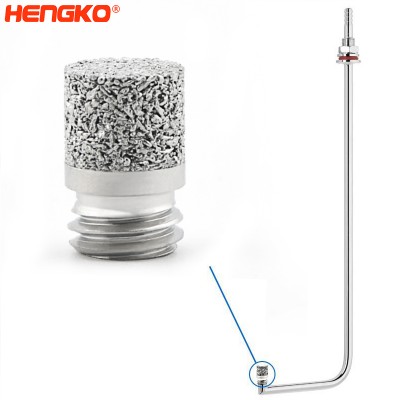
In-tank porous metal spargers or multiple sparger assembly for a large tank, increase g...
Attaches to the tip of the sparger tube, this 316L stainless steel sintered tip is available in a variety of pore sizes. The 5 10 15 50 100 pore frit is the ...
View Detail -
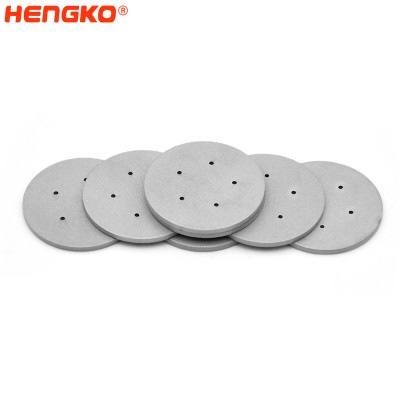
Single Use Bioreactor diffuser sparger for cell culture
In the initial stage of upstream processing in bioprocessing, fermentation is commonly used. Fermentation is defined as the chemical changes caused by microo...
View Detail -

multi – bioreactor sparger for the fermenter sartorius
The Stainless Steel Fermenter|Bioreactor for Your Laboratory A bioreactor is a type of fermentation vessel that is used for the production of various chemica...
View Detail -

HENGKO OEM Sintered Steel Filter and Sparger
OEM Sintered stainless steel diffuser / sparger, for aerating in liquid. HENGKO’s sintered sparger are unsurpassed in strength, precision and uniformity. The...
View Detail -

Sintered Stainless Steel Sparger Porous Metal Diffuser for Gas Applications
OEM Sintered stainless steel diffuser / sparger, for aerating in liquid. HENGKO’s sintered sparger are unsurpassed in strength, precision and uniformity. Th...
View Detail -

Sintered Microsparger in Bioreactor System for Green chemistry industry
The importance of aeration and gas dispersion to achieve good oxygen mass transfer cannot be understated. This is at the heart of the ability of mic...
View Detail -
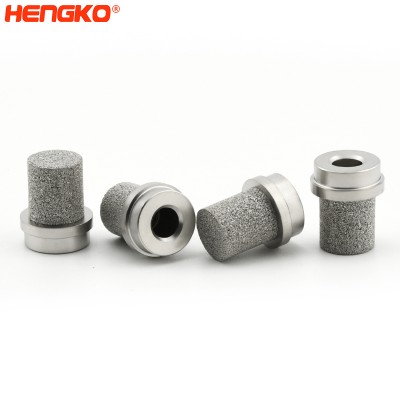
Replacement Micro-Bubble Porous Sparger Tips for Fermentation / Bioreactor Air Aeration...
Advantages of HENGKO Porous Metal Micro Spargers Due to the low solubility of oxygen in many cell culture mediums, optimizing this critical nutrient can be ...
View Detail -

Sintered Micro Porous Sparger in Benchtop for Bioreactors and Laboratory Fermenter
Every bioreactor sparging system is designed for the introduction of oxygen to feed cell cultures. Meanwhile, the system must remove carbon dioxide to preven...
View Detail -

Quick Change Sparger System for Bioreactors and Fermentors Air Sparger Accessories- Mic...
Stainless steel sparger is to supply enough oxygen to the microbes in submerge culture technique for proper metabolism. Each fermentation process requires a ...
View Detail -

316 L Powder Stainless Steel Metal Frit Spargers Building A Stainless Steel Filtering S...
Product Description This device is particularly good for fermentations that require a large population of yeast. Pilsners (or other beers fermented at low te...
View Detail -
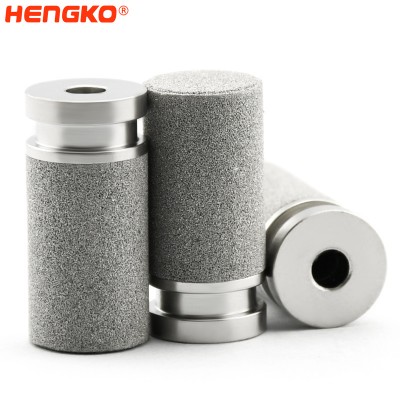
HENGKO sintered porous carbonation stone air sparger bubble diffuser nano oxygen genera...
In bioreactor systems, optimal mass transfer of gases like oxygen or carbon dioxide is difficult to accomplish. Oxygen, in particular, is poorly soluble in w...
View Detail -

Sintered Sparger Tube with Porous Metal Stainless Steel Tank and In-line Spargers Used ...
Introducing the exceptional HENGKO sintered spargers, the ultimate solution to introducing gases into liquids. This innovative product utilizes thousands of...
View Detail -
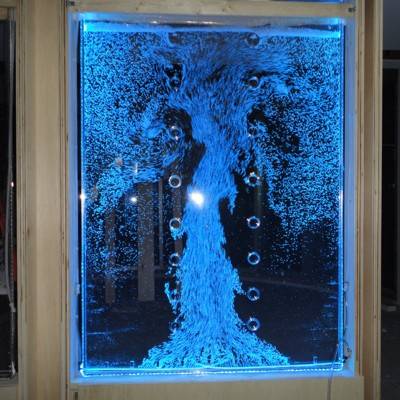
HENGKO micron small bubble air sparger oxygenation carbanation stone used in acrylic wa...
Product Describe HENGKO air sparger bubble stone is stainless steel 316/316L, food grade, with a beautiful appearance, suitable for hotels, fine dining and o...
View Detail -

Sintered Sparger Stainless Steel Material Quick Change for Bioreactor Systems
In bioreactor systems, optimal mass transfer of gases like oxygen or carbon dioxide is difficult to accomplish. Oxygen, in particular, is poorly soluble in w...
View Detail -
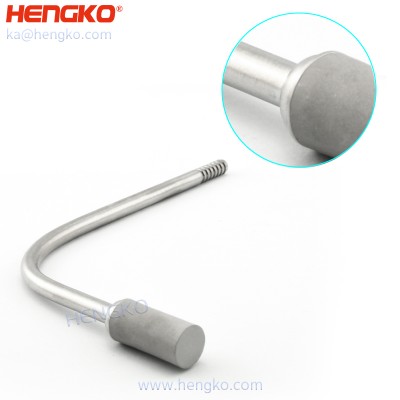
Aeration Stone 20um Sintered Stainless Steel 316L Micro sparger Diffusion Stone Supplier
Hydrogen water is clean, powerful, and with hydron. It helps to purify the blood and gets blood moving. It can prevent many kinds of diseases and improve peo...
View Detail -
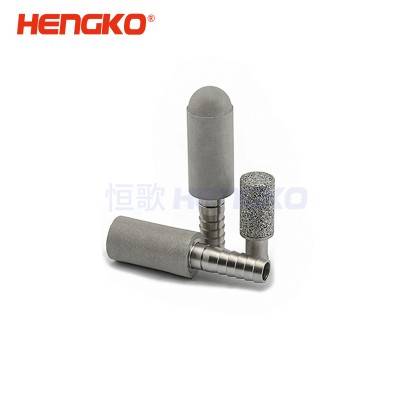
Sintered 316l stainless steel bubble hydrogen-rich water generator air sparger
Product Description Hydrogen water is clean, powerful, and with hydron. It helps to purify the blood and gets blood moving. It can prevent many kinds of di...
View Detail -
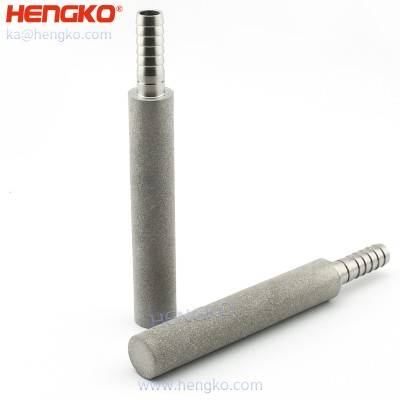
Stainless Steel Ozone Diffuser Stone Fine Air Sparger for Hydrogen Generator
Hydrogen water is clean, powerful, and with hydron. It helps to purify the blood and gets blood moving. It can prevent many kinds of diseases and improve peo...
View Detail -
Stainless Steel Aeration/Oxygen CO2 Diffusion Stone Micro Sparger for Microalgae Cultiv...
Micro-diffuser for Microalgae Cultivation, Photobioreactors & sintered sparger for microalgae cultivation is used in laboratories for growing algae. HEN...
View Detail -
Biotech Removable Porous Frit Micro Sparger for Mini Bioreactor System and Fermentors
Stainless steel sparger used as a cell retention device. The device consists of a metal tube and a sintered metal filter with a pore size of 0.5 – 40 µm. The...
View Detail
Main Features if Our In-Tank Spargers
1. Enhanced Gas Absorption:
HENGKO's In-Tank Spargers are designed to increase gas absorption by up to 300% compared to traditional
sparging technologies. This results in faster throughput and reduced gas usage.
2. Versatile Gas and Liquid Compatibility:
These spargers can be used with virtually any gas or liquid, making them suitable for improving gas absorption
in a wide range of processes.
3. Porous Metal Construction:
HENGKO's Spargers are made of porous metal, providing thousands of flow paths for gas exit in the form of
very small bubbles. This leads to significantly better gas/liquid contact and improved absorption efficiency compared
to drilled pipe and other sparging methods.
4. Long-lasting All-Metal Construction:
The spargers are constructed entirely of metal, ensuring durability and long-lasting operation even under
high temperatures (up to 1450°F) and oxidizing conditions. Various material options are available, including
316L stainless steel, Nickel 200, Monel® 400, Inconel® 600, Hastelloy® C-22/C-276/X, and Alloy 20 to accommodate
different media requirements.
5. Cost-effective and Simple Design:
Our Sintered Spargers have a straightforward design with no moving parts, making them easy to install and
maintain. spargers offer a cost-effective gas/liquid contacting solution for various applications.
6. Customizability:
The spargers are available in various sizes and configurations. HENGKO can accommodate non-standard
sizes or special fittings upon request.
7. Optimal Gas Diffusion:
In-tank sparging applications can be used for batch or continuous operation, and HENGKO's spargers
are arranged at the bottoms of tanks and vessels in a variety of ways to achieve optimal gas diffusion.
8. Multiple Sparger Assemblies:
HENGKO can provide single sparger units or multiple sparger assemblies to suit the needs of both
small and large tanks.
9. Non-intrusive, Side Stream, and Intrusive Sparging:
We offers different sparging options, including non-intrusive (in-line) sparging using GasSavers® for
in-line mounting, side stream sparging for difficult-to-access installations, and intrusive (tangential) sparging
for sparging elements located within pipelines.
10. Wide Range of Applications:
HENGKO's In-Tank Spargers are suitable for various applications, including aeration, agitation,
bioremediation, carbonation, chlorine bleaching, column flotation, dewatering, fermentation, gas/liquid
reactions, hydrogenation, oil flotation, oxygen bleaching, oxygen stripping, oxygenation, ozonation,
pH control, steam injection, volatiles stripping, and more.
11. Expert Recommendation and Custom Quotes:
HENGKO provides personalized recommendations and quotes based on your specific application needs,
such as the type of containment, gas information (type and flow rate), and liquid information (type and temperature).
Please note that the information provided is based on the description of Mott's In-Tank Spargers and might
not represent the exact features of HENGKO's product. For accurate information about HENGKO's In-Tank Spargers,
it's best to refer to their official website or contact the company directly.
Types of In-Tank Spargers
There are several types of In-Tank Spargers, each designed to meet specific application requirements.
So before you Choose right Sparger Tube for your project, You should Know Some Common
Types of Sparger Types :
1. Porous Metal Spargers:
These spargers consist of a porous metal element, typically made of stainless steel or other
corrosion-resistant materials. They provide thousands of flow paths for gas to exit in small bubbles,
offering efficient gas/liquid contact and absorption.
2. Ceramic Spargers:
Ceramic spargers are made of porous ceramic material. They are known for their high-temperature
resistance and chemical compatibility. Ceramic spargers are suitable for applications involving aggressive
chemicals or extreme temperatures.
3. PTFE (Polytetrafluoroethylene) Spargers:
PTFE spargers are made of a non-reactive and chemically resistant material. They are ideal for
applications involving aggressive chemicals, acids, and strong bases.
4. Packed Bed Spargers:
Packed bed spargers consist of a bed of solid particles or structured packing material
within the sparger. The gas is introduced into the voids between the particles, promoting
efficient gas/liquid contact and mass transfer.
5. Diffuser Disc Spargers:
These spargers have a disc-like design with small holes or slots that allow gas to disperse
into the liquid, creating a diffused bubble pattern. Diffuser disc spargers are suitable for various
applications and offer good gas dispersion.
6. Needle Spargers:
Needle spargers have a fine needle-like structure, allowing the gas to be introduced in small,
well-controlled bubbles. They are often used in precise applications, such as laboratory settings
or fine-tuning gas injection rates.
7. Bubble Cap Spargers:
Bubble cap spargers have a cap-like design with small openings through which gas is released.
They are commonly used in applications where gas needs to be dispersed in a controlled manner,
such as in some chemical reactions.
8. Slotted Pipe Spargers:
Slotted pipe spargers have longitudinal slots along the pipe's length, allowing gas to escape in
a linear fashion. They are used in various industries for aeration, agitation, and mixing processes.
Each type of In-Tank Sparger offers unique advantages and is selected based on factors such as
the specific application, gas/liquid contact requirements, temperature, and chemical compatibility.
The choice of the sparger type is crucial to ensure optimal performance and efficiency in
gas absorption processes.
Advantage of Sintered Metal Gas Sparger for In-Tank Sparger System
Sintered metal gas spargers offer several advantages for In-Tank Sparger systems:
1. Efficient Gas Dispersion:
Sintered metal spargers have a porous structure with thousands of small flow paths. This design
allows the gas to exit in the form of very fine bubbles, resulting in efficient gas dispersion and increased
gas-liquid contact area. The enhanced gas dispersion promotes better gas absorption into the liquid.
2. Uniform Gas Distribution:
The porous nature of sintered metal spargers ensures uniform gas distribution throughout the tank or vessel.
This helps to maintain consistent gas-liquid mixing and avoids localized areas of low or high gas concentration.
3. High Gas Transfer Efficiency:
The small and numerous bubbles produced by sintered metal spargers offer a large surface area for
gas absorption. This leads to faster gas transfer rates and improved process efficiency compared to other
sparging methods.
4. Durability and Longevity:
Sintered metal spargers are made from robust materials, such as stainless steel or other
corrosion-resistant alloys. They can withstand harsh chemical environments, high temperatures, and
mechanical stresses, ensuring long-lasting performance.
5. Chemical Compatibility:
Sintered metal spargers are compatible with a wide range of chemicals, including aggressive substances
and high-purity gases. They do not react with the process fluids or alter their composition, making them
suitable for diverse applications.
6. Easy Maintenance:
Sintered metal spargers typically have a simple design with no moving parts. This makes them easy to install,
clean, and maintain, reducing downtime and operational costs.
7. Versatility:
Sintered metal spargers can be customized to fit various tank sizes and configurations.
They are used in numerous industries, including chemical processing, pharmaceuticals, wastewater treatment,
food and beverage, and more.
8. Precise Gas Control:
Sintered metal spargers allow for precise control of gas flow rates, enabling accurate adjustments to gas
injection levels as needed for specific processes.
9. Cost-Effectiveness:
Despite their initial investment, sintered metal spargers provide significant long-term value due to their efficiency,
durability, and low maintenance requirements. They reduce gas usage and optimize gas absorption processes,
leading to cost savings over time.
Overall, sintered metal gas spargers offer a reliable and efficient solution for In-Tank Sparger systems, ensuring
improved gas-liquid contact, faster gas absorption, and enhanced process performance in various industrial applications.
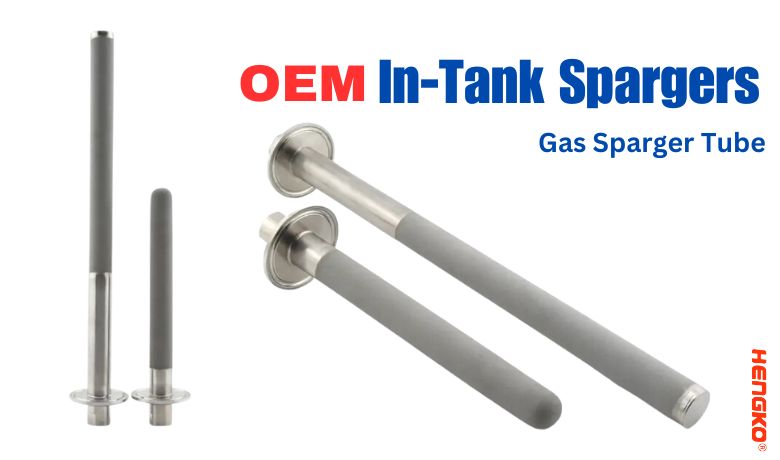
Air Sparger in tank vs. Gas Sparger
As we know, both air spargers and gas spargers are used to disperse gases into liquids for tank system.
However, there are some key differences between the two you should know.
1. Air spargers
Typically use air as the dispersing gas.
Can be used in a variety of applications, including:
* Aeration of wastewater treatment tanks
* Stripping volatile organic compounds (VOCs) from water
* Mixing liquids
* Oxygenating fish tanks
Advantages:
* Air is readily available and inexpensive.
* Air spargers are relatively simple and inexpensive to design and operate.
* Air spargers are often used in applications where the purity of the gas is not critical.
Disadvantages:
* Air is not as effective as some other gases at dispersing into liquids.
* Air spargers can be prone to clogging.
* Air spargers can be noisy.
2. Gas spargers
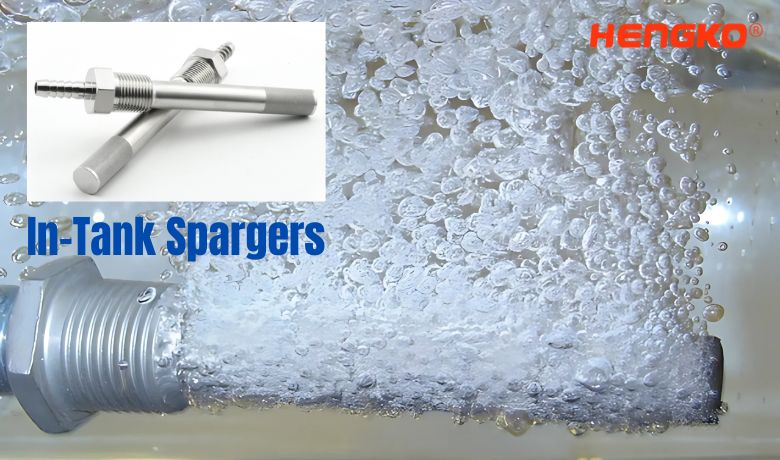
Can use a variety of gases, including:
* Oxygen
* Nitrogen
* Carbon dioxide
* Hydrogen
Can be used in a variety of applications, including:
* Chemical reactions
* Food and beverage processing
* Pharmaceuticals
* Electronics
Advantages:
* Gas spargers can be more effective than air spargers at dispersing into liquids.
* Gas spargers can be used in applications where the purity of the gas is critical.
Disadvantages:
* Gas spargers can be more expensive than air spargers.
* Gas spargers can be more complex to design and operate.
* The gas used in gas spargers can be hazardous.
Here is a table summarizing the key differences between air spargers and gas spargers:
| Feature | Air Sparger | Gas Sparger |
|---|---|---|
| Dispersing Gas | Air | Various gases |
| Applications | Wastewater treatment, VOC stripping, mixing, oxygenation | Chemical reactions, food and beverage processing, pharmaceuticals, electronics |
| Advantages | Readily available, inexpensive, simple design | More effective, can be used with pure gases |
| Disadvantages | Less effective, prone to clogging, noisy | More expensive, complex design, gas can be hazardous |
Choosing the right type of sparger
The best type of sparger for a particular application will depend on a number of factors, including:
* The type of gas being used
* The desired level of gas dispersion
* The purity of the gas
* The budget
* The complexity of the application
In some cases, an air sparger may be the most cost-effective and practical solution.
However, in other cases, a gas sparger may be necessary to achieve the desired results.
FAQ
1. What are the features of In-Tank Spargers?
In-Tank Spargers come with several key features that make them highly effective in gas-liquid contacting applications. These features include:
Porous Structure: In-Tank Spargers typically have a porous structure that allows for efficient gas dispersion in the form of small bubbles, maximizing gas-liquid contact area.
Material Selection: They are often made from durable materials like stainless steel or ceramics, ensuring corrosion resistance and longevity.
Customizability: In-Tank Spargers can be tailored to fit various tank sizes and configurations, providing flexibility for different applications.
Easy Installation: The spargers are designed for simple installation, requiring no special tools or complex assembly.
High Gas Transfer Efficiency: In-Tank Spargers promote faster gas absorption rates, reducing the time and gas volume required for gas-liquid dissolution.
2. What is the function of In-Tank Spargers?
The primary function of In-Tank Spargers is to introduce gas (such as air or other gases) into a liquid in a controlled and efficient manner. They create a dispersed gas phase with small bubbles, enhancing gas-liquid contact and improving mass transfer. The spargers are used to facilitate processes such as aeration, agitation, mixing, gas stripping, chemical reactions, and oxygenation, among others.
3. How are In-Tank Spargers installed?
In-Tank Spargers are generally installed at the bottom of the tank or vessel. The installation process may involve welding, flange connections, or threaded fittings, depending on the design and tank structure. The spargers can be installed as single units or in multiple assemblies, depending on the tank size and gas-liquid contacting requirements. Proper positioning and alignment during installation are crucial to achieve uniform gas distribution and optimal performance.
4. What are the common applications of In-Tank Spargers?
In-Tank Spargers find applications in various industries, including:
Wastewater Treatment: For aeration and stripping of volatile compounds.
Chemical Processing: To enhance chemical reactions and promote mixing.
Biotechnology: For fermentation processes and bioremediation.
Beverage Production: In carbonation processes for beverages like beer and soft drinks.
Paper Manufacturing: For chlorine bleaching and other chemical treatments.
Oil and Gas Industry: For oil flotation and volatile stripping from produced water.
Pharmaceutical Industry: In ozone sparging for water sanitization and other applications.
5. How do In-Tank Spargers improve gas-liquid contacting compared to other methods?
In-Tank Spargers provide superior gas-liquid contacting compared to traditional methods like drilled pipes or diffuser plates. The porous structure of the spargers releases gas in the form of tiny bubbles, leading to increased gas-liquid contact area. This results in faster and more efficient gas absorption, reduced gas usage, and improved process performance. In contrast, other methods may create larger bubbles with less contact area, leading to less efficient gas transfer and longer gas dissolution times.
6. Can In-Tank Spargers be used with any gas or liquid?
Yes, In-Tank Spargers are versatile and can be used with a wide range of gases and liquids. They are compatible with various gases such as air, oxygen, carbon dioxide, nitrogen, and more. The choice of the sparger material and design can be tailored to suit specific gas and liquid properties, ensuring optimal gas absorption in different applications.
7. How do I determine the appropriate In-Tank Sparger for my application?
Selecting the right In-Tank Sparger for your application requires considering factors like tank size, gas flow rate, liquid properties, and the desired gas-liquid contacting efficiency. Consulting with experts or manufacturers like HENGKO can help you determine the most suitable sparger type, material, and configuration for your specific needs. Additionally, conducting pilot tests or simulations can further optimize the sparger selection process.
8. Are In-Tank Spargers suitable for high-temperature or corrosive environments?
Yes, In-Tank Spargers made from materials like stainless steel, Monel®, Inconel®, and Hastelloy® are designed to withstand high-temperature and corrosive environments. These materials offer excellent resistance to chemical attack, making them suitable for applications where aggressive liquids or elevated temperatures are present.
9. How do I ensure proper maintenance of In-Tank Spargers?
Maintaining In-Tank Spargers involves periodic inspection, cleaning, and monitoring of their performance. Regular checks ensure that the spargers remain free of blockages or fouling, which can affect gas dispersion and contact efficiency. Cleaning methods may include backwashing, chemical cleaning, or mechanical cleaning, depending on the type of sparger and the nature of the process.
10. Can I retrofit existing tanks with In-Tank Spargers?
Yes, In-Tank Spargers can often be retrofitted into existing tank systems. The sparger design and installation may need to be customized to fit the tank's specific dimensions and requirements. Retrofitting can offer significant improvements in gas-liquid contacting efficiency and is a cost-effective way to upgrade existing processes without extensive modifications to the entire tank system.
In summary, In-Tank Spargers offer several features and advantages, including efficient gas dispersion, uniform gas distribution, high gas transfer efficiency, and versatile applications. Included installation, maintenance, and customization options make them a reliable choice for improving gas-liquid contacting processes in various industries. Consulting with experts and manufacturers can help in selecting the most suitable sparger type and configuration for specific application needs.
Ready to optimize your gas-liquid contacting process?
HENGKO offers custom-designed OEM Special Spargers tailored to your In-Tank Sparger System needs.
Benefit from improved gas dispersion, higher transfer efficiency, and enhanced performance—all at factory-direct pricing.
Our expert team is here to deliver high-quality, cost-effective solutions to elevate your operations.
Contact us today at ka@hengko.com and let HENGKO provide the perfect sparger for your system.
Unlock the full potential of your processes now!
